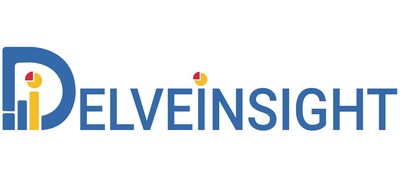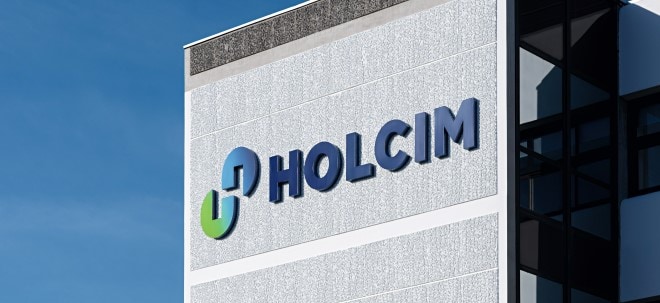IBRANCE's Market Growth Marks a Significant Step Forward in Metastatic HR+/HER2− Breast Cancer Treatment Landscape | DelveInsight
Since its launch in 2015, it has been prescribed to more than 200,000 patients globally. The drug is currently approved for use in both men and women, expanding its market potential. Despite facing competition from other CDK4/6 inhibitors like Novartis' KISQALI and Eli Lilly's VERZENIO, IBRANCE maintains a strong position in the metastatic setting.
LAS VEGAS, April 24, 2025 /PRNewswire/ -- DelveInsight's "IBRANCE Market Size, Forecast, and Market Insight Report" highlights the details around IBRANCE, a CDK4/6 inhibitor. The report provides product descriptions, patent details, and competitor products (marketed and emerging therapies) of IBRANCE. The report also highlights the historical and forecasted sales from 2020 to 2034 segmented into 7MM [the United States, the EU4 (Germany, France, Italy, and Spain), the United Kingdom, and Japan].

Pfizer's IBRANCE (palbociclib) Overview
IBRANCE is an oral medication that inhibits CDKs 4 and 6, which are crucial regulators of the cell cycle that drive cellular progression. In the U.S., IBRANCE is approved for treating adult patients with hormone receptor-positive (HR+), human epidermal growth factor receptor 2-negative (HER2-) advanced or metastatic breast cancer. It is used in combination with an aromatase inhibitor as a first-line endocrine therapy for postmenopausal women or men or with fulvestrant for patients whose disease has progressed after endocrine treatment. IBRANCE is currently authorized in over 90 countries and has been prescribed to more than 200,000 patients worldwide.
Drug Name | IBRANCE (palbociclib) |
Molecule type | Small molecule |
Developer | Pfizer |
Primary Indication | Metastatic HR+/HER2− breast cancer |
Mechanism of action | Cyclin-dependent kinase 4/6 (CDK4/6) inhibitor |
Route of administration | Oral |
Learn more about IBRANCE projected market size for metastatic HR+/HER2− breast cancer @ IBRANCE Market Potential
The HR+ HER2- subtype is the most commonly found type of breast cancer, characterized by cancer cells that have estrogen and progesterone receptors but do not overexpress HER2. A patient's journey typically begins with the onset of concerning symptoms, leading to a comprehensive clinical evaluation and various imaging tests. DelveInsight estimates that approximately 211K new cases of HR+/HER2– breast cancer occurred in the US in 2024.
CDK4/6 inhibitors currently dominate the first-line treatment market and represent a significant advancement in the management of HR+/HER2-ve breast cancer. The data from large, randomized clinical trials are both strong and consistent. While single-agent endocrine therapies have shown limited benefits in the first and subsequent treatment lines for women with ER-positive metastatic breast cancer (mBC), combination therapies have emerged as a more effective option for many patients.
In recent years, the treatment landscape for HR+/HER2−ve breast cancer has been transformed with the introduction of highly active targeted therapies, including CDK4/6 inhibitors, mTOR inhibitors, PARP inhibitors, new oral SERDs, and PI3K inhibitors. These advances have expanded the range of treatment options and improved survival outcomes for these patients. The market for metastatic HR+/HER2− breast cancer in the 7MM is projected to grow during the forecast period (2025–2034) due to the introduction of several novel therapies in the market.
Discover more about the metastatic HR+/HER2− breast cancer market in detail @ Metastatic HR+/HER2− Breast Cancer Market Report
Emerging Competitors of IBRANCE
Some of the drugs in the pipeline include Gedatolisib (Celcuity), ARV-471 (Arvinas and Pfizer), OP-1250 (Olema Pharmaceuticals), KEYTRUDA (Merck), and Rupitasertib (Evexta Bio), among others. In December 2024, Arvinas and Pfizer presented preliminary data from the ongoing Phase 1b portion of the TACTIVE-U sub-study of vepdegestrant in combination with abemaciclib among patients with locally advanced or metastatic ER+/HER2- breast cancer at the San Antonio Breast Cancer Symposium (SABCS) 2024.
In December 2024, Olema Pharmaceuticals presented clinical results from the ongoing Phase Ib/II study of palazestrant in combination with ribociclib in patients with ER+/HER2- advanced or metastatic breast cancer at SABCS 2024.
To know more about the number of competing drugs in development, visit @ IBRANCE Market Positioning Compared to Other Drugs
Key Milestones of IBRANCE
- In February 2021, Pfizer Inc. announced that the U.S. Patent and Trademark Office (USPTO) has granted a U.S. Patent Term Extension (PTE) certificate for IBRANCE. This extension prolongs the validity of U.S. Patent No. RE47,739 ('739) by over four years, now lasting until March 5, 2027.
- In April 2019, Pfizer announced that the FDA has approved a supplemental New Drug Application (sNDA) to broaden the uses of IBRANCE in combination with an aromatase inhibitor or fulvestrant, now including men with hormone receptor-positive (HR+), HER2-negative (HER2-) advanced or metastatic breast cancer.
- In March 2017, Pfizer Inc. revealed that the FDA has approved a supplemental New Drug Application (sNDA) for IBRANCE, its pioneering cyclin-dependent kinase 4/6 (CDK 4/6) inhibitor, following the positive outcomes from the confirmatory Phase 3 trial PALOMA-2.
- In September 2016, Pfizer Inc. announced that the European Medicines Agency's (EMA) Committee for Medicinal Products for Human Use (CHMP) had issued a positive recommendation for the marketing authorization of IBRANCE® (palbociclib) in the European Union (EU). This recommendation is for its use in treating women with hormone receptor-positive, HER2-negative (HR+/HER2-) locally advanced or metastatic breast cancer.
- In February 2016, Pfizer announced that the FDA has approved a new indication for IBRANCE 125mg capsules, expanding its use. The approval allows IBRANCE to be used in combination with fulvestrant for the treatment of hormone receptor-positive (HR+), human epidermal growth factor receptor 2-negative (HER2-) advanced or metastatic breast cancer in women whose disease has progressed after endocrine therapy.
- In February 2015, Pfizer announced that the FDA granted accelerated approval for IBRANCE in combination with letrozole to treat postmenopausal women with estrogen receptor-positive, human epidermal growth factor receptor 2-negative (ER+/HER2-) advanced breast cancer as the initial endocrine-based therapy for their metastatic disease.
Discover how IBRANCE is shaping the metastatic HR+/HER2− breast cancer treatment landscape @ IBRANCE Drug
IBRANCE Market Dynamics
IBRANCE is a targeted therapy that has revolutionized the treatment of hormone receptor-positive, HER2-negative breast cancer, particularly in combination with aromatase inhibitors or letrozole. Developed by Pfizer, IBRANCE was one of the first CDK4/6 inhibitors approved by the FDA for metastatic breast cancer, and its approval has significantly changed the treatment landscape. The drug works by inhibiting cyclin-dependent kinases 4 and 6, which are key regulators of the cell cycle, thus preventing cancer cells from proliferating. Its market dynamics have been shaped by the growing demand for targeted therapies, as well as the increasing focus on precision medicine and improved patient outcomes.
The global market for IBRANCE has been positively impacted by its proven efficacy in clinical trials and its ability to extend progression-free survival in breast cancer patients. The drug's market dominance is underpinned by its widespread acceptance and adoption by oncologists worldwide. However, competition is intensifying, with other CDK4/6 inhibitors such as VERZENIO (abemaciclib) and KISQALI (ribociclib) entering the market, offering similar benefits but with some distinct clinical profiles. This competitive landscape has led to strategic pricing and marketing strategies by Pfizer, aiming to maintain IBRANCE's market leadership while managing pressures from generic alternatives.
Additionally, the evolving reimbursement landscape and regulatory policies around oncology drugs are crucial factors influencing the market dynamics. Health insurers and government healthcare programs often scrutinize the cost-effectiveness of cancer treatments, which can impact the pricing and accessibility of IBRANCE in different markets. Another factor is the rising focus on combination therapies, as IBRANCE is often used in conjunction with other drugs like letrozole, which boosts its efficacy and market potential. The shift toward personalized cancer treatment regimens is expected to continue fueling demand for CDK4/6 inhibitors like IBRANCE, especially in more advanced stages of breast cancer.
In terms of geographical markets, IBRANCE has seen significant uptake in North America and Europe, where the healthcare infrastructure supports innovative cancer therapies. However, emerging markets, where the economic barriers to accessing expensive cancer treatments can be higher, present a challenge to the widespread use of IBRANCE. Pfizer's ongoing efforts to expand in these regions, through partnerships and pricing adjustments, will be key to ensuring continued growth in global market share. Overall, the IBRANCE market is poised for steady growth, driven by clinical advancements, increasing breast cancer diagnoses, and the continual push toward more targeted, effective therapies.
Dive deeper to get more insight into IBRANCE's strengths & weaknesses relative to competitors @ IBRANCE Market Drug Report
Table of Contents
1 | Report Introduction |
2 | IBRANCE: Pfizer |
2.1 | Product Overview |
2.2 | Other Development Activities |
2.3 | Clinical Development |
2.4 | Clinical Trials Information |
2.5 | Safety and Efficacy |
2.6 | Product Profile |
2.7 | Market Assessment |
2.7.1 | The 7MM Analysis |
2.7.1.1 | Cost Assumptions and Rebate |
2.7.1.2 | Pricing Trends |
2.7.1.3 | Analogue Assessment |
2.7.1.4 | Launch Year and Therapy Uptake |
2.7.2 | The United States Market Analysis |
2.7.3 | EU4 and the United Kingdom Market Analysis |
2.7.3.1 | Germany |
2.7.3.2 | France |
2.7.3.3 | Italy |
2.7.3.4 | Spain |
2.7.3.5 | UK |
2.7.4 | Japan Market Analysis |
2.8 | Market Drivers |
2.9 | Market Barriers |
2.10 | SWOT Analysis |
3 | Key Cross of Marketed Competitors of IBRANCE |
4 | Key Cross of Emerging Competitors of IBRANCE |
Related Reports
Metastatic HR+/HER2− Breast Cancer Market
Metastatic HR+/HER2− Breast Cancer Market Insights, Epidemiology, and Market Forecast – 2034 report deliver an in-depth understanding of the disease, historical and forecasted epidemiology, as well as the market trends, market drivers, market barriers, and key metastatic HR+/HER2− breast cancer companies, including Merck, Arvinas, Olema Pharmaceuticals, Celcuity, Roche, AstraZeneca, Daiichi Sankyo, Eli Lilly, Sermonix Pharmaceuticals, Genentech, Veru Pharma, DualityBio, BioNtech, Evgen Pharma, Carrick Therapeutics, EQRx, G1 Therapeutics, Immutep, among others.
HR+/HER2− Breast Cancer Pipeline
HR+/HER2− Breast Cancer Pipeline Insight – 2025 report provides comprehensive insights about the pipeline landscape, pipeline drug profiles, including clinical and non-clinical stage products, and the key HR+/HER2− breast cancer companies, including Regor Therapeuics, Seagen Inc., CytomX Therapeutics, Taizhou EOC Pharma, Chia Tai Tianqing Pharmaceutical Group, AstraZeneca, Daiichi Sankyo, Inc., Tyme, Inc., Seagen Inc., Context Therapeutics, Eisai Inc., Shanghai Hengrui Pharmaceutical Co., Ltd., Jiangsu Simcere Pharmaceutical Co., Kind Pharmaceuticals, Merus N.V., Atossa Therapeutics, Roche, among others.
Breast Cancer Market Insights, Epidemiology, and Market Forecast – 2034 report deliver an in-depth understanding of the disease, historical and forecasted epidemiology, market share of the individual therapies, and key breast cancer companies including Veru, Sanofi, Roche, AstraZeneca, Eli Lilly, EQRx, Gilead, Sermonix Pharmaceuticals, Evgen Pharma, Tyme, Genentech, Daiichi Sankyo, among others.
Metastatic Breast Cancer Pipeline
Metastatic Breast Cancer Pipeline Insight – 2025 report provides comprehensive insights about the pipeline landscape, including clinical and non-clinical stage products, and the key metastatic breast cancer companies, including Roche, RemeGen, SynCore Biotechnology, Allarity Therapeutics, Daiichi Sankyo Company, Jiangsu Alphamab Biopharmaceuticals Co., Ltd, Byondis B.V., Jiangsu Hansoh Pharmaceutical Co., Ltd., Shanghai Miracogen Inc., Ambrx, Inc., Daehwa Pharmaceutical Co., Ltd., Phoenix Molecular Designs, GlycoMimetics Incorporated, Rhizen Pharmaceuticals SA, Menarini Group, Samus Therapeutics, Inc., Hanmi Pharmaceutical Company Limited, Jiangxi Qingfeng Pharmaceutical Co. Ltd., Immutep Limited, Arvinas Inc., G1 Therapeutics, Mirati Therapeutics Inc., Chia Tai Tianqing Pharmaceutical, Shanghai Pharmaceuticals Holding Co., Ltd, Pfizer, OncoTherapy Science, Inc., Eisai Inc., Dizal Pharmaceuticals, Jiangsu Hengrui Medicine Co., Tyme, Inc, Orion Pharma, HiberCell, Inc., Rhizen Pharmaceuticals SA, Hutchison Medipharma Limited, OncoPep Inc., Taizhou Hanzhong biomedical co. LTD, among others.
About DelveInsight
DelveInsight is a leading Business Consultant and Market Research firm focused exclusively on life sciences. It supports pharma companies by providing comprehensive end-to-end solutions to improve their performance. Get hassle-free access to all the healthcare and pharma market research reports through our subscription-based platform PharmDelve.
Contact Us
Shruti Thakur
info@delveinsight.com
+14699457679
Logo: https://mma.prnewswire.com/media/1082265/DelveInsight_Logo.jpg
![]() View original content:https://www.prnewswire.co.uk/news-releases/ibrances-market-growth-marks-a-significant-step-forward-in-metastatic-hrher2-breast-cancer-treatment-landscape--delveinsight-302436986.html
View original content:https://www.prnewswire.co.uk/news-releases/ibrances-market-growth-marks-a-significant-step-forward-in-metastatic-hrher2-breast-cancer-treatment-landscape--delveinsight-302436986.html

